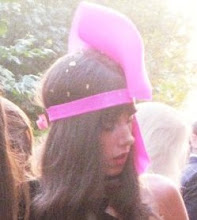









When looking through fairytale books nowadays, I can't help but noticing just how hideous most illustrations are. There are various illustration trends, all of them equally ugly: the "postmodern" illustration, usually made very obviously by computer and which just looks "fake", the "naive" illustration, which looks like the illustrator thinks children are idiots, or the "arty" illustration, of which I'd rather not speak. All those self-proclaimed illustrators should just look back to the ultimate classic of fairytale illustration (we all remember his Peter Pan and Alice in Wonderland versions), Arthur Rackham. His style, between Preraphaelite and Art Nouveau was simple, detailed, narrative, with a very airy and free trace that makes us think his characters are in a world which has less gravity. In his work, fairies and other characters, subtle and fragile but still real, bathe in the rare light of fantasy. I am not a big fan of fairies, trolls and gnomes, still Arthur Rackham's illustrations make me dream...









 The thing which strikes me the most about this film (besides the amazing fashion, the champagne and the tons of cakes and macarons which, as the French would say, "me mettent l'eau à la bouche") is the feeling of intimacy with Marie Antoinette that I get. Approaching this subject in a non-epic, non-judgmental way is not usual, although this very intimate, very sensual way of filming is typical but also exclusive from Sofia Coppola. Pastel tones, a classic elegance and a very pictural photography remind me of the frivolous paintings of Fragonnard. The film got all kinds of reviews because of its non-orthodox soundtrack and atrezzo, but I love the way this is a very Pop Marie Antoinette without ever falling on any easy clichés and with a very good historical background. The film is a true hommage to the exhuberance of Versailles and its gardens, to the french definition of luxury and to the "joie de vivre" in general. Some days ago I heard Sofia Coppola is preparing her fourth film, which will be set on the infamous Chateau Marmont Hotel in California, and will tell the story of a decadent rockstar and his daughter. A plot that would seem "banale" if it was made by any other filmmaker, but with Coppola we can all expect pop culture references, a delicate approach to emotions and aesthetics, a great soudtrack and an otherworldly light. At the very least.
The thing which strikes me the most about this film (besides the amazing fashion, the champagne and the tons of cakes and macarons which, as the French would say, "me mettent l'eau à la bouche") is the feeling of intimacy with Marie Antoinette that I get. Approaching this subject in a non-epic, non-judgmental way is not usual, although this very intimate, very sensual way of filming is typical but also exclusive from Sofia Coppola. Pastel tones, a classic elegance and a very pictural photography remind me of the frivolous paintings of Fragonnard. The film got all kinds of reviews because of its non-orthodox soundtrack and atrezzo, but I love the way this is a very Pop Marie Antoinette without ever falling on any easy clichés and with a very good historical background. The film is a true hommage to the exhuberance of Versailles and its gardens, to the french definition of luxury and to the "joie de vivre" in general. Some days ago I heard Sofia Coppola is preparing her fourth film, which will be set on the infamous Chateau Marmont Hotel in California, and will tell the story of a decadent rockstar and his daughter. A plot that would seem "banale" if it was made by any other filmmaker, but with Coppola we can all expect pop culture references, a delicate approach to emotions and aesthetics, a great soudtrack and an otherworldly light. At the very least. 











































